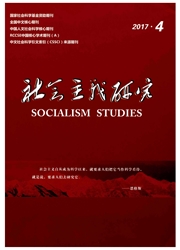

 中文摘要:
中文摘要:
在制度的保障和约束下,基层治理主体凭借资源禀赋,进入场域并与场域互动形成治理结构,同时这也是城市基层治理主体间关系结构化的结果。借助场域理念研究治理结构能够最大限度地体现治理主体与基层场域互动的情境化和过程化特征。关系是理解治理场域的核心,而位置是理解治理结构的核心。由于不同时空状态下治理场域所需资源不同以及基层各组织发展状况不同,作为组织与场域互动结构的治理结构的发展状态也不同,大致可分为结构排斥与结构权变、结构紧张与结构协调、结构同构与结构异构等情况。通过组织与场域互动这一分析框架可以有效揭示治理结构形成逻辑,进一步掌握城市基层治理状况,为后续研究作铺垫。
 英文摘要:
英文摘要:
Under the protection and restriction of the system and based on the resource endowment, grass-roots governance bodies enter the field and interact with the field, then the governance structure is formed. This is also the result of the structured relationship among the main governance bodies. Governance structure research, by means of field ideas, can to the maximum extentreflect the scenario and processfeature in the interaction between governance bodies and the grass-root field . Relationship is the core to understanding the governance field, and position is the core to understanding the governance structure.Because of the difference of the resources needed by the governance field in different spatio-temporal condition and the development status of grass-root organizations, which cause the difference of the development of governance structures as the interaction between organization and field. There are three basic types: repulsive structure and contingency structure, tensional structure and concordant structure, isomorphic structure and heterogeneous structure. This analytical framework is based on the interaction between organizations and the field, which can effectively reveal the logic of governance structure, and further grasp the status of urban governance, and pave the way for further empirical research.
 同期刊论文项目
同期刊论文项目
 同项目期刊论文
同项目期刊论文
 期刊信息
期刊信息
